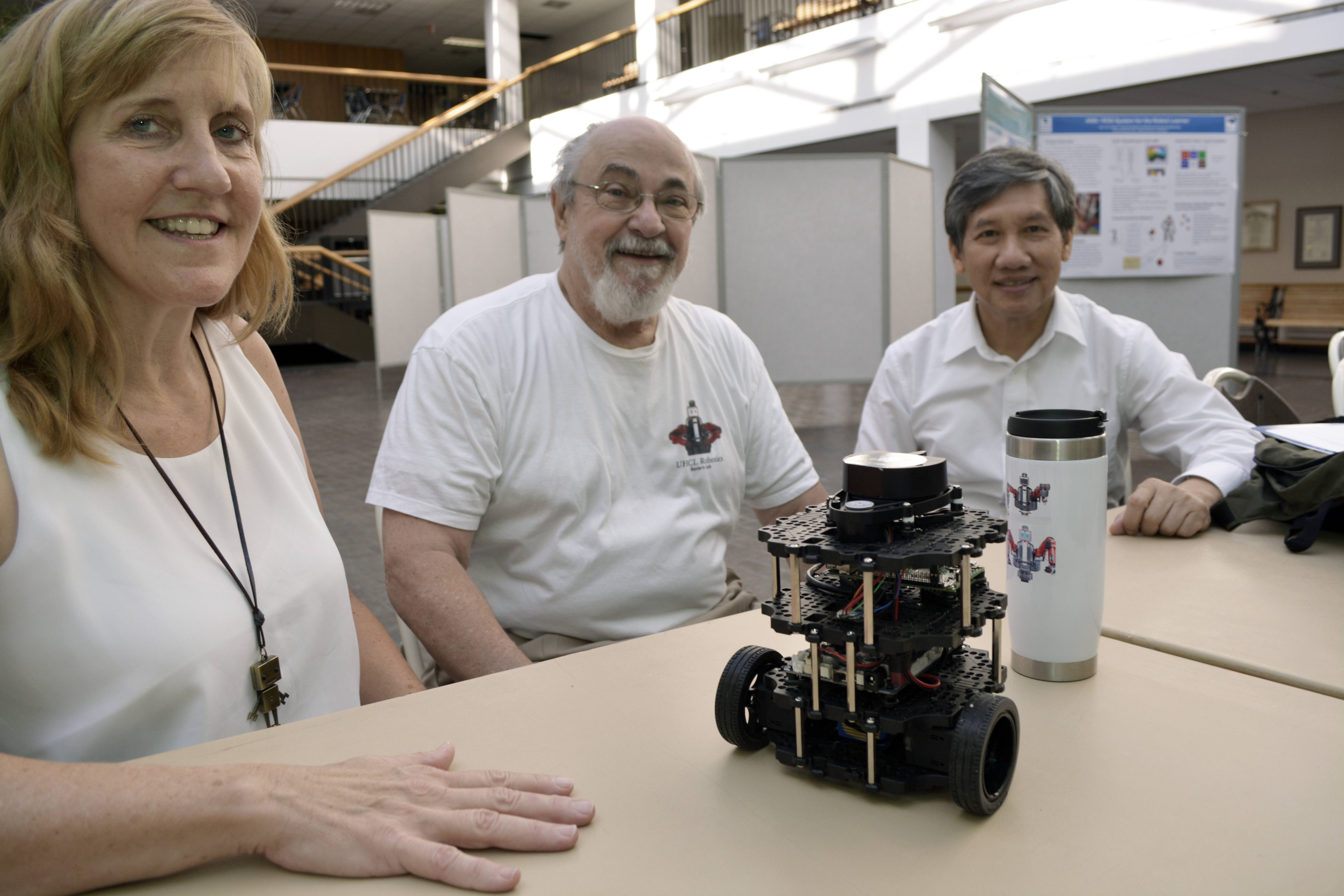
Robotics & AI Day provides a showcase of what is, what can be
Three wide-eyed middle-school students stood over Turtlebot 3 “Burger,” one of the latest robots procured by University of Houston-Clear Lake’s Center for Robotics Software. Under eight inches tall, it doesn’t look much like a robot. It doesn’t look anything at all like a turtle, let alone a hamburger.
“Look! Is that a raspberry pie?” one said excitedly as he pointed to one of the Turtlebot’s components.
“I think so. Yes! It’s raspberry pie,” said another.
At least, that’s what the exchange might have sounded like to an uninitiated attendee of the Robotics & AI Day, hosted by UH-Clear Lake’s Center for Robotics Software in collaboration with San Jacinto College, University of Houston, Rice University, NASA and other area partners.
The middle-schoolers, who had accompanied a UH professor to the event, knew their stuff.

Learn more about UHCL’s science and engineering centers and outreach programs at www.uhcl.edu/science-engineering/centers-initiatives. Photo courtesy of the Office of University of Communications.
They were referring to Raspberry Pi, the credit-card size, fully programmable computer that runs Turtlebot 3 and tens of millions of other robots and devices. Raspberry Pi is a favorite in schools for teaching basic computer science and for robotics enthusiasts worldwide for learning how to code in Robot Operating System, or ROS, the ubiquitous, open-source middleware that tells robots what to do.
Turtlebot 3 is the third-generation of a mobile, extensible and relatively low-cost robot that thousands of developers use to learn ROS. Add an arm and a claw, a camera, GPS and collection receptacle and you have a valet that picks up after you – or an off-world rover.
“From cobbled-together parts, indispensable things are invented – things we didn’t know we needed until they existed. Careers are launched and industries are built,” said Thomas L. Harman, professor of computer engineering, chair of the Engineering Department and director of the Center for Robotics Software. A case in point:
“BMW uses the Robot Operating System in some of their self-driving cars,” said Harman.
“So if they’re using it, you’re going to see ROS everywhere,” said Harman, who added that he visited the German automotive giant in Munich. “Their research facility 22 stories high.”
More than 60 students, educators, engineers and others heard 20 five-minute presentations on a wide variety of robotics and artificial intelligence topics, from ongoing research projects to real-world solutions for NASA and the International Space Station.
Faculty and students from throughout the Greater Houston area presented topics such as robot mechanisms, motion planning, manipulation, robot swarm technology and robot programming.
Other thought-provoking presentations included research on what graphing the electrical impulses of the brain’s nerve cells might tell us about cognition, health, memory and the brain’s ability to heal; intelligent, energy-saving lighting systems; using augmented reality as a chemistry teaching tool, and a low-cost, networkable air-and-soil sampler to help farmers make informed, instantaneous decisions on where to best plant crops.
This was the second year for a day of robotics presentations at UHCL.
“The point of Robotics & AI Day is collaboration,” Harman said. “All of the center’s outreach programs are to let people know that this expertise is here. As with the Center for Robotics Software, the goal is to have a center of excellence based on the work being done at the University of Houston-Clear Lake, but that also encompasses work being done by other universities, NASA and other companies.”
Learn more about UHCL’s science and engineering centers and outreach programs at www.uhcl.edu/science-engineering/centers-initiatives.
Also published on Medium.
